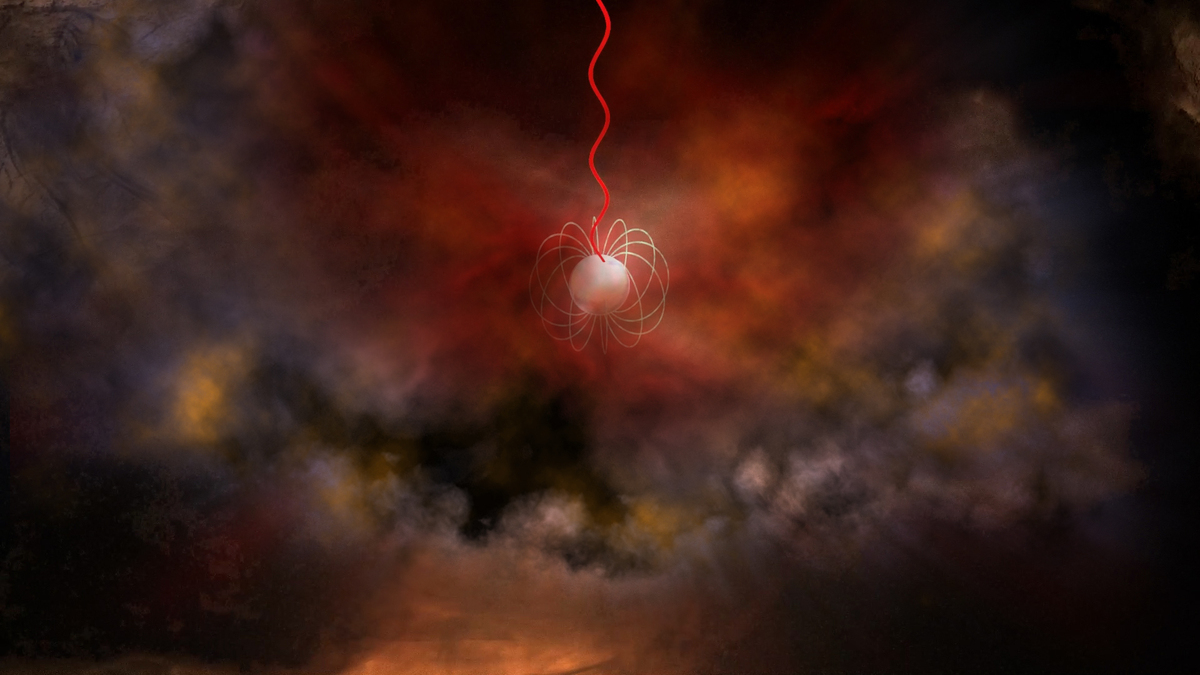Socorro, NM – The US National Science Foundation (NSF) National Radio Astronomy Observatory (NSF NRAO) and the Karl G. Jansky Very Large Array (NSF VLA) have played a pivotal role in uncovering the origins of persistent emissions observed in some fast radio bursts (FRBs). An international team of astronomers has demonstrated that this persistent radiation originates from a plasma bubble, shedding new light on the enigmatic sources powering these cosmic phenomena.
Tag: Fast Radio Burst
Astronomers Shed New Light on Formation of Mysterious Fast Radio Bursts
International team reports on a radio pulsar phase of a Galactic magnetar that emitted a fast radio burst in 2020; observations suggest unique origins for “bursts” and “pulses,” which adds to FRB formation theory.
Baseline 16—Fast Radio Bursts: Bursting with Mysteries
Fast radio bursts are powerful flashes of light that shine for only milliseconds. Join our host Summer Ash of the National Radio Astronomy Observatory as she talks about how astronomers study these mysterious bursts, and what might be causing them.
Sudden Spin-down Event Illuminates Magnetar Mystery
A new paper published in Nature Astronomy is shedding light on magnetars, whose attributes remain poorly understood. A magnetar is a type of neutron star with an extremely strong magnetic field that rotates once every two to ten seconds. Researchers…
Astronomers Unveil New – and Puzzling – Features of Mysterious Fast Radio Bursts
More than 15 years after deep-space fast radio bursts were first discovered, their perplexing nature continues to surprise astronomers – and newly published research only deepens the mystery surrounding them.
Rapid-fire fast radio burst shows hot space between galaxies
A recently discovered, rare and persistent rapid-fire fast radio burst source – sending out an occasional and informative cosmic ping from more than 3.5 billion light years away – helps to reveal the secrets of the broiling hot space between the galaxies. That’s according to an international team of astronomers who published their findings in the journal Nature.

Strange Radio Burst Raises New Questions
A highly active repeating Fast Radio Burst is raising new questions about the nature of such objects, and also raising doubts about their usefulness as cosmic yardsticks.
Astronomers Closer to Unlocking Origin of Mysterious Fast Radio Bursts
Nearly 15 years after the discovery of fast radio bursts (FRBs), the origin of the millisecond-long, deep-space cosmic explosions remains a mystery. That may soon change, thanks to the work of an international team of scientists – including UNLV astrophysicist Bing Zhang – which tracked hundreds of the bursts from five different sources and found clues in FRB polarization patterns that may reveal their origin.
CHIME telescope and collaborative efforts from WVU lead to the detection of more than 500 fast radio bursts
With the help of the radio telescope located at the Dominion Radio Astrophysical Observatory, operated by the National Research Council of Canada, in British Columbia, Canada, the telescope has nearly quadrupled the number of FRB discovered to date.

Astrophysicist named international Highly Cited Researcher
Maura McLaughlin has been named a 2020 Highly Cited Researcher by Web of Science, one of the world’s top research awards.